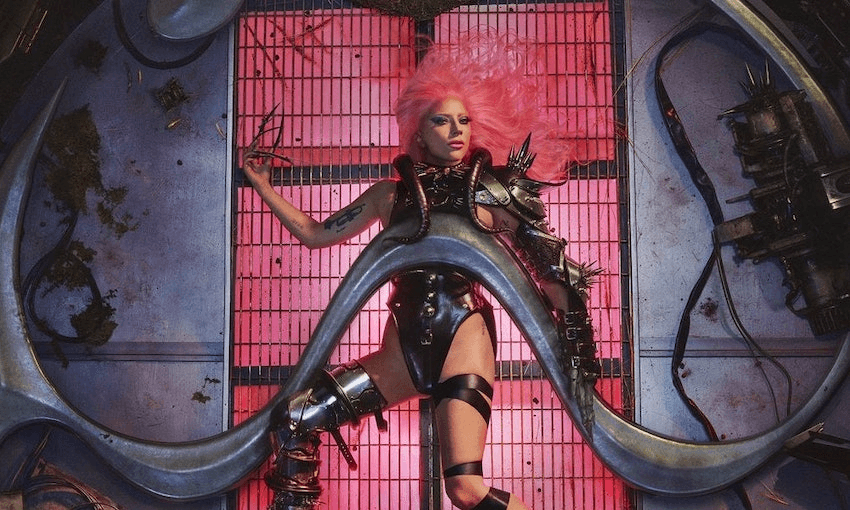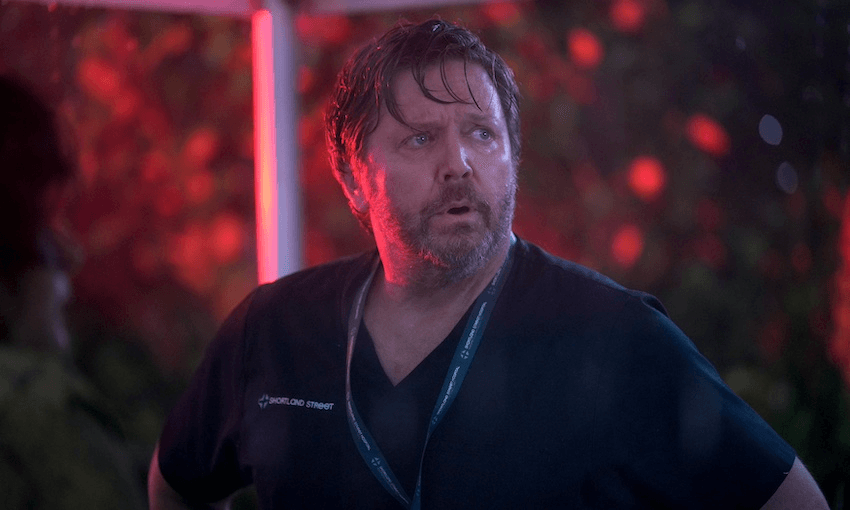Lady Gaga’s sixth album, Chromatica, sees the popstar stepping back into big pop after the experiment that was Joanne, but at what cost, asks Sam Brooks.
Since Lady Gaga’s last album, 2016’s critically shrugged off Joanne, the star has stepped as far away from her meat-dress persona as possible, collecting a Golden Globe and an Oscar to boot. But no matter how much people love Shallow – and the iconic “whoa-oh-OH-oh” that turned it into a meme – her hardcore fans have been waiting for one thing: some goddamned bangers. The soundtrack for A Star is Born has a few, but they had the sheen of character; it was Gaga in character as a trashy popstar, rather than Gaga in her full, gilded glory.
From the release of the neon-saturated Stupid Love way back in February, Chromatica signalled a return to that glory. Songs you could dance to, songs you could put on a playlist, and likely most importantly, songs you could actually see on a chart. Then the second single, the excellent disco-soaked ‘Rain on Me’, an ode to friendship duet with Ariana Grande came, and it was confirmed: We’re back in big pop territory (and also BloodPop territory, as the producer from Joanne returns for every song here.)
Chromatica is a return to genre, if not exactly to form. These are catchy, club-ready songs but within the three acts of the album (split up with string-heavy segues courtesy of M83’s Morgan Kibby), the songs can blend together in both sound and intent. The first act is full of uplifting songs like the aforementioned ‘Rain on Me’ and ‘Free Woman’, the second is full of heavier songs like ‘911’ and ‘Plastic Doll’, while the third is full of songs that are, well, for the cab home or the kebab store. This structure leaves the album feeling less like a collection of great pop songs, and more like a guide to the night out; it’s calculated in a way that allows the songs to blend into each other, rather than rub up against each other.
It’s a shame because Lady Gaga’s music thrives on that tension between songs; just go back and listen to The Fame Monster, and how those songs sound put next to each other. Gaga thrives on her contradictions; she’s at her most real and engaging when she’s at her most constructed, and at her most inauthentic when she’s being “vulnerable”. She never had to prove herself as a popstar, she had the pipes and the chops from the jump. No, it was when she stepped behind a piano that it felt like she was trying to prove something. It felt like she was saying, “Look everyone, I’m a serious musician! I play piano! I’m can do duets with Tony Bennett!” Those impulses and constructions lead us to Joanne, and you can see the vestiges of that in Chromatica’s most earnest moments. They don’t feel wrong, necessarily, just calculated; a desire to be seen as uplifting rather than actually be uplifting. For the first time, her personality sinks beneath the surface of her songs.
Two songs on Chromatica stand above the rest; one showcasing Gaga at her best, and one showcasing a more recent, of-the-moment, pop icon entirely. That pop icon is BLACKPINK, the latest world-dominating pop hydra from South Korea, who feature on ‘Sour Candy’, a two-and-a-half minute piece of taut electropop. The song succeeds not because of Gaga but in spite of her; she’s bookended by the girl group, trading off lines, raps and harmonies with a smoothness that rides that 90s house bassline, whereas Gaga’s slurred, low register clashes with it. She feels like the featured artist on her own song, the past in someone else’s present.
The other is ‘Sine from Above’ (which is much better than that laboured homonym), a duet with Elton John. It’s a monster of a pop song, with nearly as many co-writers as there are tracks on the entire album. It’s probably the only earnest moment on the album that doesn’t feel false, with Hallmark lyrics like “the sound created stars like me”, but Gaga rolling around in her high register over an angelic, DJ Sammy-esque piano line while Elton John does his Elvis-but-gay schtick hits the exact right spot. It’s a big, silly, club song that doesn’t feel like it’s trying to do anything other than get people on the floor for one last dance at any cost – there’s even a glorious drum’n’bass outro as a last ditch attempt.
Gaga is one of our greats, she’s one of the few artists who can surf trends while creating her own, and she’s able to throw forward and break ground while looking back and paying homage, all in service of a banger. Chromatica finds her back in her comfort zone, and both clubs and pop fans will love her for it, but it’s missing the edges and the conflict that made her great to start with.
You can listen to Chromatica on all streaming services now.



